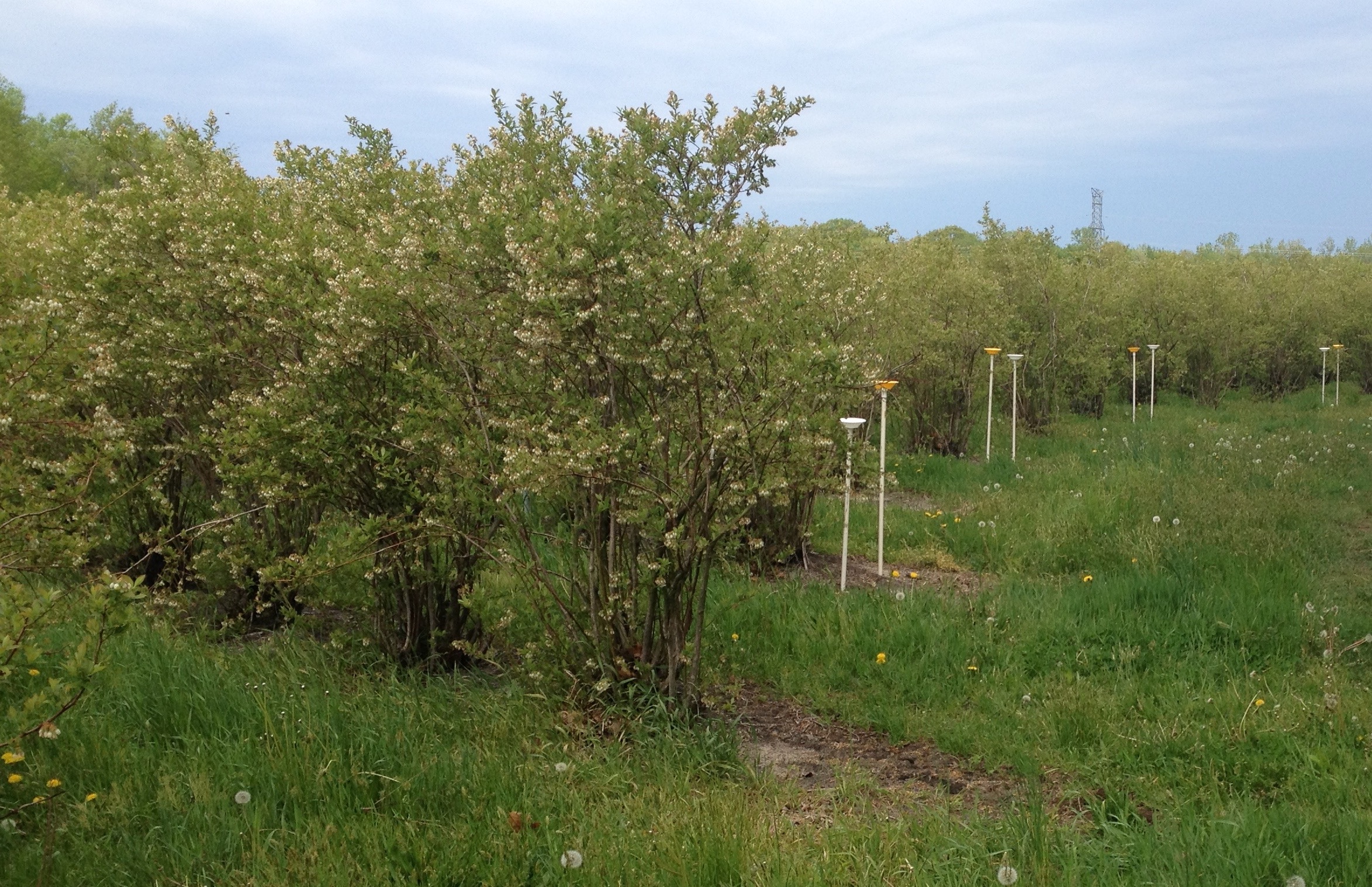Michigan is home to 465 bee species and each one plays a role in the states’ ecosystems. During a 15-year study of wild bees visiting blueberry fields during their blooming season, researchers caught an unexpected glimpse of how extreme weather events can impact bee populations highlighting the need for more long-term studies, says a Michigan State University researcher.
“There are few bee studies in the U.S. that have sampled bees for many years at the same location,” said Rufus Isaacs, a professor in the Department of Entomology within the College of Agriculture and Natural Resources, “There are even fewer that use the same methods over more than a decade.”
The research was published May 8 in the journal Agriculture, Ecosystems and Environment.
Isaacs worked with Kelsey Graham, a former postdoctoral researcher who is now with the U.S. Department of Agriculture-Agricultural Research Service. Graham collected bees during the last sampling period and combined data from two former MSU students into the analysis.
During the study, bees were sampled during three separate periods in May and June during 2004-2006, 2013-2014 and 2017-2018. The bees were collected using brightly colored bowls full of soapy water located at 15 farms across southwest Michigan. Different bee species are active at different times of the year, nest in different places (in the ground or in the stems of plants) and have different host plants.
 Capturing bees Courtesy of Emily May
Capturing bees Courtesy of Emily May
This study looked at a specific slice of the bees who were active during May-June and visited blueberry bushes while they were blooming. To the researchers' surprise, the very warm spring and hot summer of 2012 provided a unique opportunity to see how bee populations responded and recovered to the extreme weather event in subsequent years.
“The very advanced spring in 2012 was so unique, and flowers were open when the frosts came in April and May" Isaacs said. “This wasn’t what we were trying to study but this helps explain the patterns we found.”
The study captured 162 species or 35% of the bee species in Michigan from 2004-2018. The team saw a 61% decline in the number of bees between the first and second sampling periods, because of extreme warm temperatures in spring 2012. The freeze damaged flowers bees need for food. Some bee species recovered, but others such as the blueberry specialist bee, Andrena carolina, displayed a dramatic decline and slow recovery in the third sampling period.
“We also looked at the use of pesticides and found that the environmental affects had a bigger impact on the bee population,” Isaacs said. “We were fortunate to combine the work of three separate projects for this analysis. If you only look at the short periods of time, you might come to different conclusions, but long-term over multiple samples we can see the bigger trends.”
This study highlights the need to develop programs that monitor wild bees across the United States since they are important to food systems. “Our data will contribute to the national efforts to understand how to protect these beautiful and essential insects,” Isaacs said.
The research was funded by USDA National Institute of Food and Agriculture.